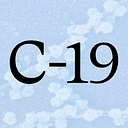Anthony Fauci’s Thoughts on Covid-19 Transmission, Treatments, and Vaccines
A few key takeaways from America’s top infectious disease doctor
This morning, Anthony Fauci, MD, director of the National Institute of Allergy and Infectious Diseases and one of the most trusted voices on the coronavirus, presented medical grand rounds at Johns Hopkins Hospital. He provided a thorough overview of the Covid-19 pandemic, including details about the recent vaccine announcements.
Showing a map of the U.S. covered in red, Fauci says, “We are at the explosive, almost exponential, stage of the pandemic.” With over 180,000 new cases in the U.S. every day, the pandemic is at its worst point since the spring. Also notable is that the U.S. never achieved the low levels of spread that countries in Europe — currently experiencing their second wave of the virus — did over the summer. The reason is that the U.S. never uniformly locked down like Spain and Italy, for example, which can be seen through cell phone mobility tracking data.
“Just because a vaccine is available, it doesn’t mean you can abandon public health measures immediately. Depending on how many people in the population get vaccinated, you will likely need to keep up non-pharmacological interventions like masks and distancing for some time.”
When it comes to transmission, Fauci says there clearly is a degree of aerosol spread. He says it’s unknown how much aerosols contribute to the overall transmission of the virus, but we do know that it occurs. In contrast, we now know the virus is less commonly transmitted through surfaces. Based on this information, the Centers for Disease Control and Prevention (CDC) has determined that restaurants, gyms, and religious venues are all high-risk locations because they are typically indoors with poor ventilation and high exhalation from people talking, exercising, and singing. He says they are also seeing more spread from small, indoor gatherings in people’s homes, often due to asymptomatic spread.
Speaking of asymptomatic spread, Fauci says that 40–45% of transmission is due to asymptomatic people unwittingly infecting others. This is why masks are so essential — by wearing one, you protect other people even if you don’t know that you’re infected.
Of the people who are symptomatic, 80–85% of them will have mild to moderate symptoms that are similar to flu but with the unique loss of smell and taste. The other 15–20% of symptomatic cases have severe disease that could be lethal, with the elderly and people with pre-existing conditions at the highest risk. Of note, 40% of the U.S. population has a pre-existing condition. Severe Covid-19 is characterized not just by lung problems but also seriously scary cardiac, circulatory, neurological, and inflammatory issues that can be fatal.
A new consideration that has emerged is what Fauci calls post-Covid-19 syndrome, also known as long-haul Covid. These are people who have cleared the virus from their system but still have persistent symptoms (shortness of breath, fatigue, brain fog, aches and pains) for months, even if they only had a mild case of the disease initially. It’s unclear what percentage of people develop post-Covid-19 syndrome and why it occurs. Fauci says the National Institutes of Health is currently in the process of planning research and funding to study the condition.
There are three types of treatments currently authorized to treat Covid-19: the antiviral drug remdesivir, corticosteroids such as dexamethasone, and monoclonal antibody therapies. A recent study from Europe cast doubt on the effectiveness of remdesivir, but Fauci says it doesn’t necessarily conflict with the earlier trials from the U.S. that earned it approval. The European study showed a lack of effect on deaths, while the American study demonstrated improvement in recovery from hospitalizations.
Timing comes into play when administering the other therapies. Corticosteroids suppress the immune system, so they should only be given late in the infection if there is hyper-inflammation. Taken too early, they can suppress the necessary immune response. Monoclonal antibodies, on the other hand, should be given as early as possible. The problem is, they can only be administered to hospitalized patients when it’s possibly too late. Fauci says that ideally in the future there will be an oral antiviral drug that can be taken at home that prevents the deadly hyper-inflammatory response.
Finally, the conversation turned to the big vaccine news: Two phase 3 trials by the pharmaceutical companies Pfizer/BioNTech and Moderna have reported 95% efficacy rates at preventing Covid-19. Pfizer just submitted a request to the Food and Drug Administration for an emergency use authorization today, and Fauci expects both vaccines will be granted authorization by the end of December.
The two vaccines use a novel mRNA delivery platform, which Fauci says was high risk-high reward: The technology had never been used before, but it had huge potential because of its speed and flexibility. “And thank god it worked!” he said. The fact that two different trials using the same platform got virtually the same result (95% efficacy) is astounding and bodes well for using the technology to create vaccines for other viruses, too.
Questions do remain about the vaccines, though, like how long protection will last. We know from common cold coronaviruses that immunity is typically not long-lasting, so Fauci expects a vaccine for Covid-19 to work for a few months to a few years. In the future, people might have to get a vaccine booster.
Another question is whether the vaccine can be given to children, who were for the most part excluded from the large phase 3 clinical trials. Fauci says that if smaller phase 1 and 2 clinical trials in children indicate that the vaccines are safe, then scientists can bridge that safety data to the efficacy data from adults. In other words, if a vaccine is safe in kids and effective in adults, you can assume it’s effective in kids too, and you don’t have to redo a phase 3 trial just in children.
The next step will be a staged rollout of the vaccine based on people’s risk and exposure levels. Equally important will be to convince people that the vaccine development process was transparent, independent, and scientifically sound. And just because a vaccine is available, it doesn’t mean you can abandon public health measures immediately. Depending on how many people in the population get vaccinated, you will likely need to keep up non-pharmacological interventions like masks and distancing for some time.
Closing on a serious note, Fauci says that we’re not going to eliminate or eradicate this infection — the world has only done that with one virus ever (smallpox). We also need to not forget and move on once the pandemic is over. Striking racial health disparities have been illuminated during the pandemic, and we need to put in place long-term systems and funding to address social determinants of health.

